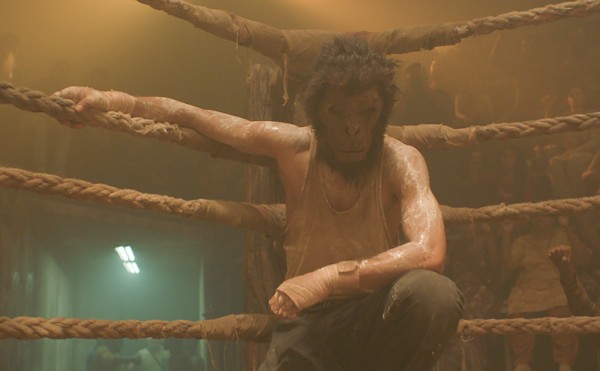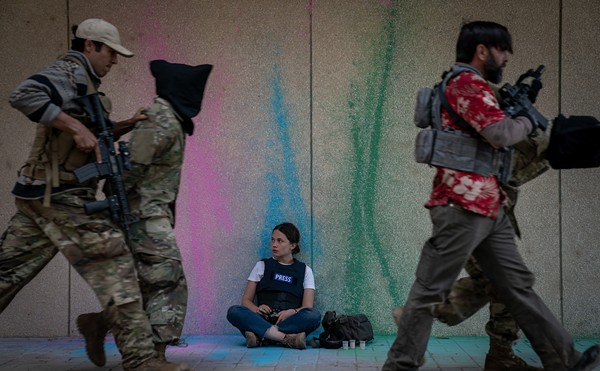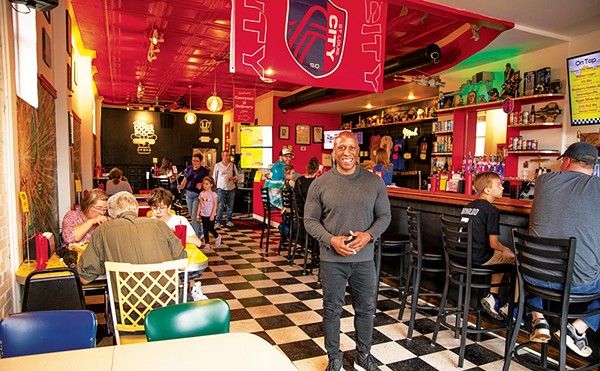The hallucinatory Goya in Bordeaux is Saura's fourth collaboration with the visionary cinematographer Vittorio Storaro. The film is far more than a mere visual feast, however. In the hands of Saura and Storaro, color, composition, light, shadow, space and texture become both reflections of thematic concerns and agents of deeply held beliefs and emotions. As in many of Saura's more recent works, music and dance are woven into the tapestry of the film.
The influence of Buñuel can be felt throughout the film, beginning with the startling credit sequence, in which the camera slowly glides above an orange-red landscape that looks oddly like tomato sauce or possibly paint. The head of a boar sits in the glistening paste. Suddenly a large, unidentifiable object is lifted into the air, hoisted by chains. A moment later, it becomes clear that the object is a gutted pig. The camera slowly tracks in, and the beast's bones and muscles start to distort and morph into an image of Goya's face. The painter opens his eyes, awakening from a dream, and the story begins.
Goya, portrayed by Francisco Rabal, embarks on a journey through his past. Although he ostensibly is relating his life story to his 12-year-old daughter, Rosario (Daphne Fernández), it is really an odyssey of the mind. He recalls himself as an ambitious young artist (José Coronado as the younger Goya), determined to be named official painter to the court of King Charles IV. Men and women in powdered faces and white wigs float across the screen, their seductive smiles and shifting eyes suggesting both the allure and danger of palace life. It is here, as a young man, that Goya first spies the captivating Duchess of Alba (Maribel Verdú, the only woman he will ever truly love.
Everything about the production is exquisite, from Storaro's lensing and Pierre-Louis Thévenet's art direction to Pedro Moreno's costumes and Roque Baños' captivating musical score. Rabal conveys the confusion, regret and still-fierce passions of the aging artist, who retired to Bordeaux, France, in the last years of his life. Presiding over all of it is Saura, in whose imaginative hands paintings come to life and solid walls become translucent. Moody and atmospheric, the film nonetheless has a crispness that accentuates the surreal nature of the story.
Saura is a good match for Goya, whose later paintings and etchings depicted the horrors of war and critiqued the moral disintegration of Spain under a succession of despotic leaders (just as Saura's early films decried the regime of the latter-day dictator, Franco). A filmmaker of passion and intelligence, Saura is probably best known in this country for a series of films he made that were played out in dance and music: Blood Wedding (1981), Carmen (1983), El Amor Brujo (1986), Flamenco (1995) and Tango, his 1998 film that was nominated for an Academy Award as Best Foreign Language Film. Goya in Bordeaux is a worthy addition to the great director's body of work.





